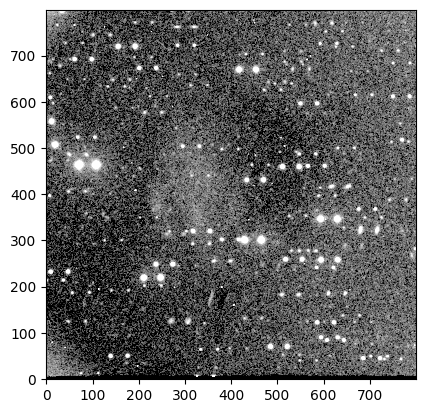Database queries#
Note: this notebooks makes reference to other example notebooks, make sure that the following files are available in the same directory as this notebook:
!ls *.py
01_notebook_configuration.py 04_details_on_astrometric_calibration.py
02_database_queries.py 05_quad_matching_dipol_polarimetry_images.py
03_manual_reduction.py
Configure IOP4 and logging (see examples)
%autoawait off
%matplotlib inline
%run 01_notebook_configuration.py
In IOP4, observing sessions, FITS files and observational results are all represented by a Python class, and each instance of them is a row in the corresponding table in the database. IOP4 uses the Django ORM to interact with the database (DB) through these models, so the user does not need to worry about keeping the results in sync with the database, building SQL queries or updating the DB schema after each change in any of these classes.
IOP4 models are available under the iop4lib.db submodule. The following models are available:
Epoch: an observing session, represented by the telescope and date (of the night). It provides methods for downloading and making the initial classification of files from each observing session.
RawFit: a raw FITS file
MasterBias, MasterDark and MasterDark: calibration frames built from the corresponding raw files for each epoch.
ReducedFit: a reduced FITS file, built from the corresponding raw file after applying calibration frames, astronometric calibration, etc.
AperPhotResult: result of performing aperture photometry on an image. It is used as an intermediate object to compute photo-polarimetry because of two reasons: to re-use them and to easy debugging of the final results.
PhotoPolResult: final result of photo-polarimetry.
Each of the models is linked through attributes to the rest of models.
Database queries can be made through the .objects attribute of this models,
which allows for filtering, ordering, etc of these.
Let’s query the DB for the last observing session:
from iop4lib.enums import *
from iop4lib.db import *
epoch = Epoch.objects.order_by('-night').first()
epoch
- telescope: OSN-T090
- night: 2023-12-13
- 2 rawfits: 1 bias, 1 flat, 0 light
- summary status: CLASSIFIED, DOWNLOADED
In an IPython terminal, this will pretty-print a description of epoch.
To query the last of the “science” (LIGHT) CAFOS files, we could do
rf = RawFit.objects.filter(imgtype=IMGTYPES.LIGHT, instrument=INSTRUMENTS.CAFOS).order_by('-juliandate').first()
rf
- telescope: CAHA-T220
- night: 2023-10-09
- filename: caf-20231009-19:28:49-sci-agui.fits
- instrument: CAFOS2.2
- imgtype: LIGHT
- size: 800x800
- obsmode: POLARIMETRY
- band: R
- exptime: 180.0
- flags: DOWNLOADED,CLASSIFIED,BUILT_REDUCED
If the image was already reduced, you can get the corresponding reduced FITS with
redf = rf.reduced
redf
- telescope: CAHA-T220
- night: 2023-10-09
- filename: caf-20231009-19:28:49-sci-agui.fits
- instrument: CAFOS2.2
- imgtype: LIGHT
- size: 800x800
- obsmode: POLARIMETRY
- band: R
- exptime: 180.0
- flags: DOWNLOADED,CLASSIFIED,BUILT_REDUCED
If you wanted to get a preview of the file, you could plot the 2D data which
is accesible through the redf.mdata attribute. Otherwise, you can use one of
the utility function in iop4lib.utils.plotting.
from iop4lib.utils.plotting import imshow_w_sources
imshow_w_sources(redf.mdata)

The reduced fit will link back to the raw file through redf.rawfit. It also
links to the used calibration frames through redf.masterbias,
redf.masterdark, redf.masterbias and redf.masterdark, and to the night
through redf.epoch. You can check all related fields for a given model in
its reference (fields of class ForeignKey, OneToOneField or
ManyToManyField).
More complex queries can be made using .filter() .exclude(). These will
return a reduced Django Queryset. For example, to query (and count) all files
whose filename contains BLLac (case in-sensitive)
qs = ReducedFit.objects.filter(filename__icontains="BLLac")
qs.count()
7
The result is a Django QuerySet, which can be further filtered, indexed or converted to a list. To exclude all DIPOL observations you would do: qs = qs.exclude(instrument=INSTRUMENTS.DIPOL) qs.count()
If you wanted to access the second of the returned one you could do qs[2]
Epochs (observing nights) are uniquely identified by the telescope and date
corresponding to the day of the start of the night (in the DB schema, there
is an unique constaint on the telescope and night fields). Raw FITS
files are defined uniquely by their epoch and file name. The convenience
functions Epoch.by_epochname and `RawFit.by_fileloc” can be used to directly
search the DB with this string
Epoch.by_epochname("OSN-T090/2023-11-06").pk == Epoch.objects.get(telescope="OSN-T090", night="2023-11-06").pk
True
and
RawFit.by_fileloc("OSN-T090/2023-11-06/BLLAC_R_IAR-0760.fts").pk == RawFit.objects.get(epoch__telescope="OSN-T090", epoch__night="2023-11-06", filename="BLLAC_R_IAR-0760.fts").pk
True
In the previous examples, the difference between .filter and .get is that
the former will return a QuerySet (iterable) which might also be empty, the
later will return the single instance matching the query, and raise an
exception if there is none or multiple.
In addition, we have inadvertently used the field__query syntax to access
methods or related fields. At the beginning we used filename__icontains
instead of simply filename to search for a case-insensitive string in the
field. And now we have used epoch__telescope to access the telescope field
of the related Epoch objects, since RawFit contains simply a reference to
Epoch, instead of duplicated telescope and night fields.
For more information about querying the DB, see the Django ORM documentation.